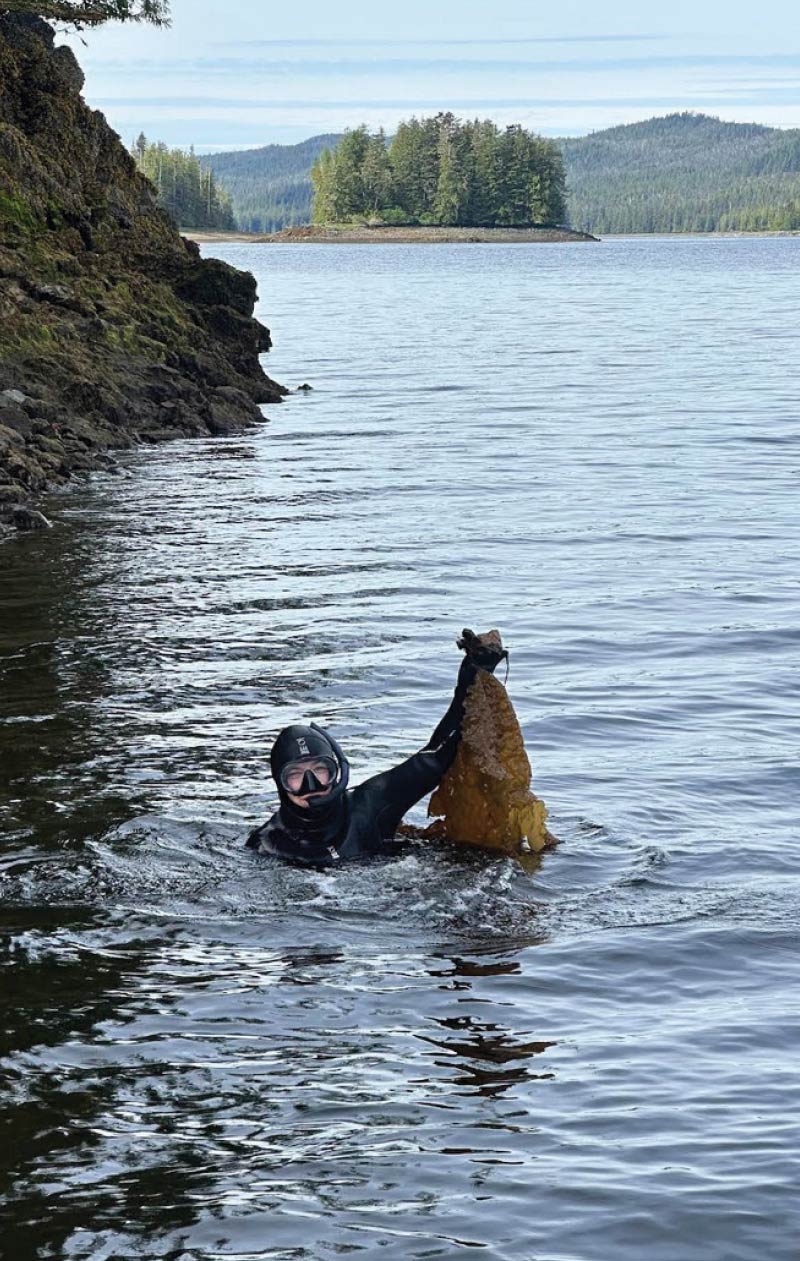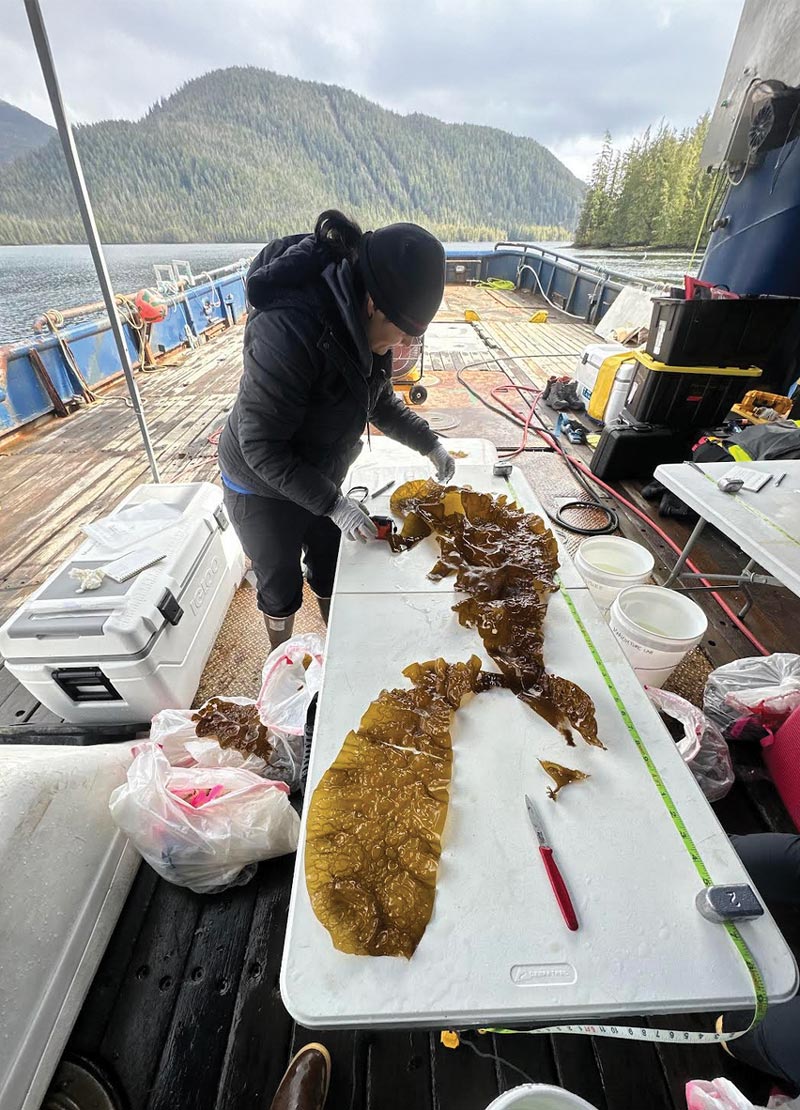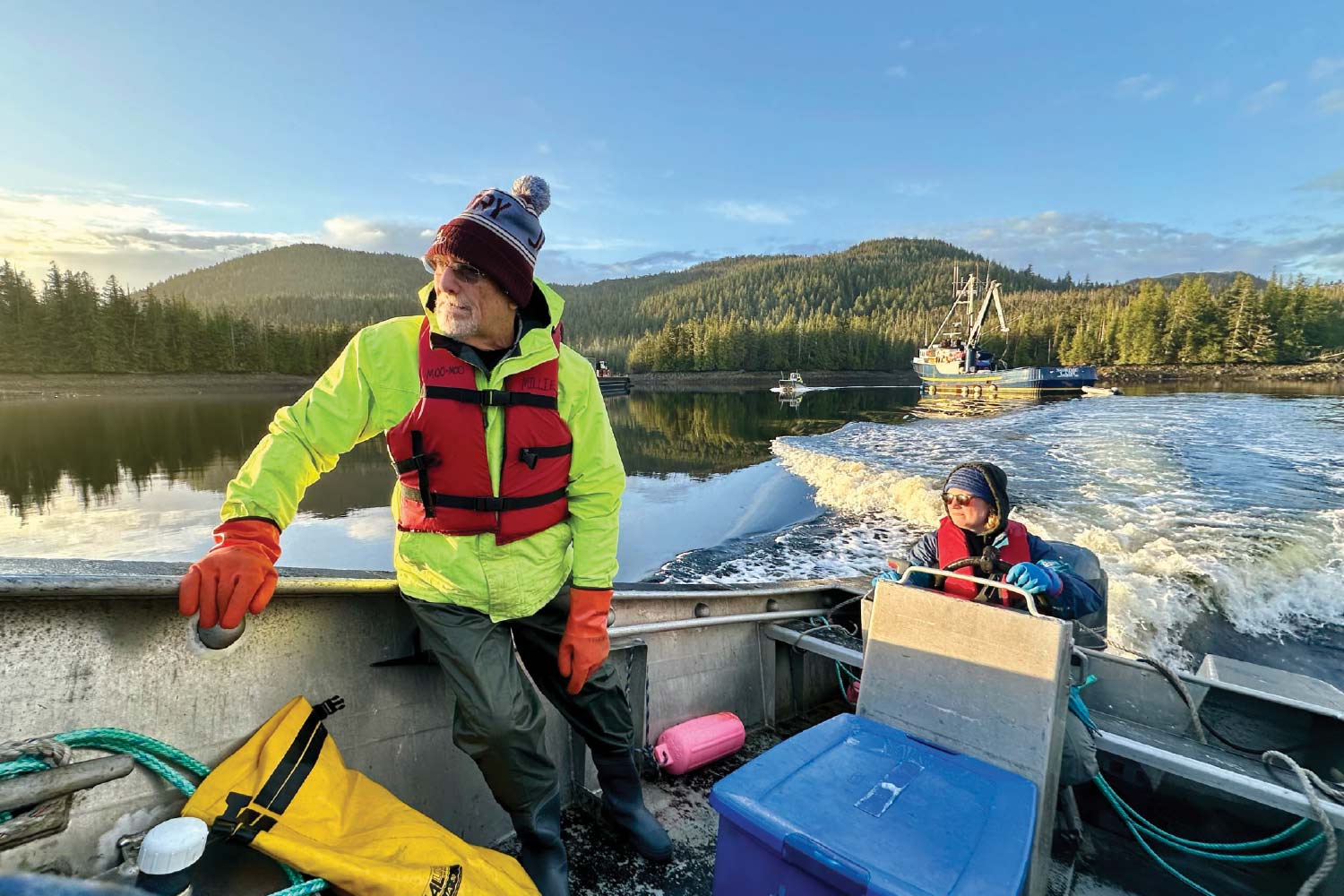
chery Umanzor is thinking about uses for seaweed: Food. Biofuels. Animal feed. Biodegradable packaging.
“Seaweeds have a use,” she emphasizes. “There’s a reason why it’s the fastest growing industry in the world. [But] realistically, [the United States] cannot compete with Asia or Latin America” when it comes to exporting seaweed products to the rest of the world.
Since April 2024, Umanzor has led a UAF research team in the study of seaweeds in Southeast. The team is less interested in the use of biomass—the plant material produced by seaweed—than in the potential of extracting rare earth elements (REEs) from them.
Partnering with UAF on this project are UAA, the National Renewable Energy Laboratory, Seagrove Kelp, Ocean Rainforest, and the Alaska Fisheries Development Foundation.
Though the project is only weeks into the second year of a two-year study, Umanzor’s team has made some promising findings. Whether REE extraction from seaweed could lead to a viable new industry in Alaska, however, would depend on a significant shift in how Americans use seaweed.
At the same time, demand for REEs increased. REEs aren’t “rare” because they’re hard to find—elements such as gadolinium, neodymium, and yttrium are more abundant in the Earth’s crust than tin, tungsten, or mercury—but they are thinly distributed and difficult to mine efficiently. Nevertheless, they’re used for a variety of sought-after technologies, everything from tiny motors for adjusting car seats and the light-emitting phosphors in mobile screens to laser targeting and weapons in military vehicles.
Currently, China controls most global REE mining and processing. Since the suspension of nearly all REE exports from China this April, demand for REEs has grown amid shortages that threaten many American-made technologies. Now more than ever, discovering a new way to source REEs could mean significant benefits to the United States.
Previous exploratory research by the Pacific Northwest National Laboratory found that seaweeds can accumulate REEs dissolved in the ocean. The UAF team’s project builds on those findings to ask whether the seaweed off the shore of Prince of Wales Island at the base of Bokan Mountain is accumulating REEs in concentrations worth the effort it would take to recover them.
“Seaweeds are like sponges,” says Umanzor. “Our goals were to understand the geochemistry of the site, to determine what the seaweeds are accumulating and at what rate.”

UAF College of Fisheries and Ocean Sciences

“This particular site is completely exposed to environmental elements. It rains so much over there, the rain washes the rock, causing REEs to leach into the streams and then into the ocean,” explains Umanzor.
And then into the seaweed. So far, the simple answer to the question posed by Umanzor’s research is that, yes, seaweed does act as a sponge, soaking up REEs that run off from the mountain and into the ocean. Research has detected the presence of several REEs in the seaweed: lanthanum, neodymium, and dysprosium are all present at higher concentrations. Additional REEs, including yttrium, europium, gadolinium, and lutetium, are also detectable at lower concentrations.
“Higher,” though, is relative in REE research. These REEs are found at “really minute” amounts, Umanzor points out. “We’re talking parts per billion in most cases.”
Detecting REEs at such miniscule amounts was no easy feat. While the analysis of the seaweed was guided by existing methods for detecting critical minerals at low concentrations, Lieve Laurens of the National Renewable Energy Laboratory and her colleagues had to use extremely sensitive instruments to detect and measure REEs from Bokan Mountain—while at the same time avoiding contamination.
“As soon as we would’ve, for example, used metal scissors or a metal spatula or touched the [samples] with our fingers, any of these samples would’ve gotten contaminated with very low concentrations of elements and compromised the quality of our results,” Laurens explains.
UAF College of Fisheries and Ocean Sciences

UAF College of Fisheries and Ocean Sciences

“The recovery of rare elements cannot be a standalone industry,” Umanzor says.
She envisions the possibility of incorporating REE reclamation into seaweed farms, where the REEs are recovered in a clean way that allows for the biomass to be processed for other uses, like food, animal feed, and packaging. In fact, these seaweed farms already exist—just not primarily in the United States. The expense of seaweed farming in the ocean, along with the lack of an existing “pathway” to establishing additional farms, would be major hurdles to overcome, she says.
One surprising finding of the study was the discovery that different species of seaweed have different selectivity for the REEs they capture. The research team had predicted that whatever elements were present in the seaweed would be a representation of everything present in the water. Instead, REEs appear to be present in different amounts, depending on the seaweed species.
Laurens says more research needs to be done to understand exactly how seaweeds select REEs, what role polysaccharides play in adsorbing REEs, and whether there are proteins playing an active role in seaweeds by acting as “gatekeepers,” letting some REEs in while keeping others out. Gaining a better understanding of this selectivity, Umanzor says, might allow for specific species of seaweed to be planted with the purpose of collecting REEs.
If scientists can determine which seaweeds are best at collecting specific REEs, additional value could be captured by “selectively deploying” a species of seaweed in the bodies of water near mining operations.
Laurens likens this possibility to kelp forests that are planted to clean pollutants from water.
“That vision of using biology to capture elements is not new, but we could use it here to work with some of the mining companies to recapture additional value beyond the mine and, at the same time, clean up the water source as well,” she describes.
Umanzor imagines another option: If researchers can find the mechanisms of bioaccumulation present in the seaweed, what if they could create a synthetic version that could be thrown into water to capture REEs?
It sounds like science fiction. But fantasy could become reality with more research.

UAF College of Fisheries and Ocean Sciences
She sees her research on the ability of seaweed to collect REEs as a similar laying of groundwork. While she doubts seaweeds will ever become a substitute for mining or be relied upon solely for REE extraction, she does see a future in which seaweed could play a significant role in new industries.
“Everything that we are learning about is going to open a door to understanding other processes. It may not take a long time before we revisit this because we are in need of those elements. We’re going to need all possible options [for recovering them].”
Developing ways to recover REEs from seaweed, though, will require additional understanding. When the UAF research project sunsets in April 2026, new funding will be needed to continue important work toward using what’s been learned—and potentially growing a new industry that could benefit Alaska.
“It’s exciting to be opening doors,” says Laurens. “There’s a lot more to be done. There’s a lot more doors that we’re going to open, but we need continued support to make that happen.”